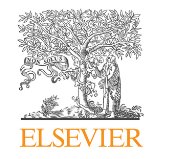Polar bear health in environmental science and translational medicine.
New publication by Christian Sonne, Aage Kristian Olsen Alstrup, Rune Dietz.

Abstract:
Polar bear health has been extensively studied over the past decades as highlighted by e.g. Dietz et al. (2018), Daugaard-Petersen et al. (2018) and Sonne (2010) all in Environment International.
The research field highlights the enigma that female polar bears maintain good health despite extreme high fat diet, periods of prolonged stationarity, hypophagia and comprehensive weight loss (Letcher et al., 2010). These are all factors usually associated with cardiovascular diseases, diabetes and osteoporosis in man. Nonetheless, even though polar bears can have a blood lipid content of 50% after a seal meal, preliminary data from analyses of clinical biochemistry reflect no signs of cardiometabolic disease (Ciesielski et al., 2018). Likewise, no wild female polar bears have ever been reported with clinical fractures in the literature even though their lifespan is of up to 40 years. The reasons for these biological paradoxes are likely to be found in genetic mutations evolved over the last half a million years (Liu et al., 2014).
Therefore, research in the health of this threatened hibernator offers opportunities for in-depth studies of how this species avoid chronic diseases. A holistic approach using omics to map the endocrine, metabolic and genetic profile can be an excellent systems biology framework to study cardiometabolic and osteoid biochemical processes in polar bears (Richards et al., 2012; Thiele and Palsson, 2010). This novel knowledge has the potential to be translated into human medicinal research helping the more than 180 mill patients suffering from conditions such as cardiovascular disease, osteoporotic bone loss and diabetes in Europe alone requiring yearly mortality rates of 0.5–4 mill (Svedbom et al., 2013; European Cardiovascular Disease Statistics, 2017; WHO Europe, 2018).
Environmental studies of female polar bears are likely to help us increase the understanding of how they avoid having osteoporosis and cardiometabolic disease so is the use of polar bear female health in translational medicine is just waiting to be settled.
Environment International, Bind 121, Nr. 1, 12.2018, s. 296. https://doi.org/10.1016/j.envint.2018.09.019
